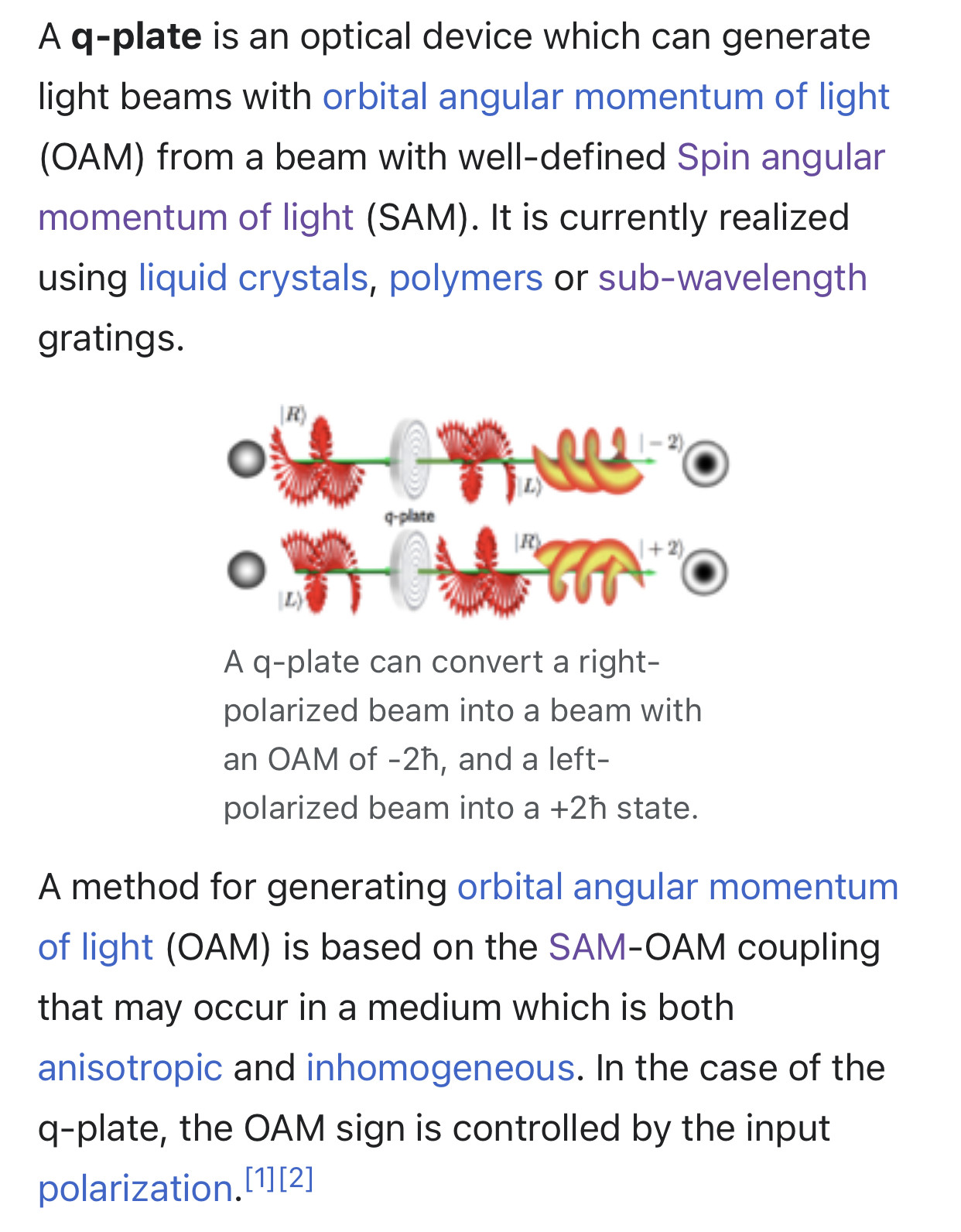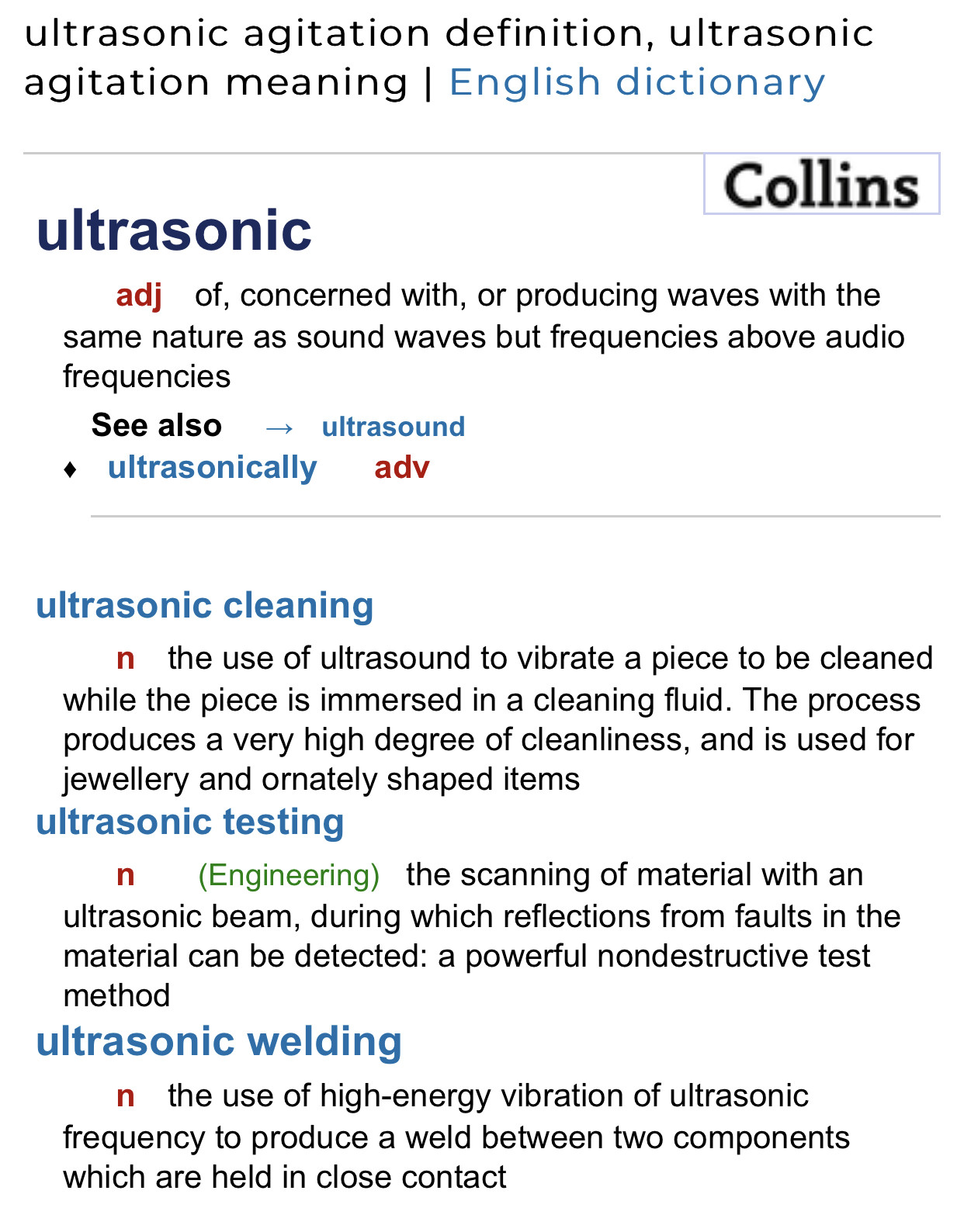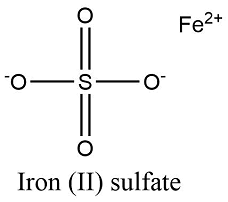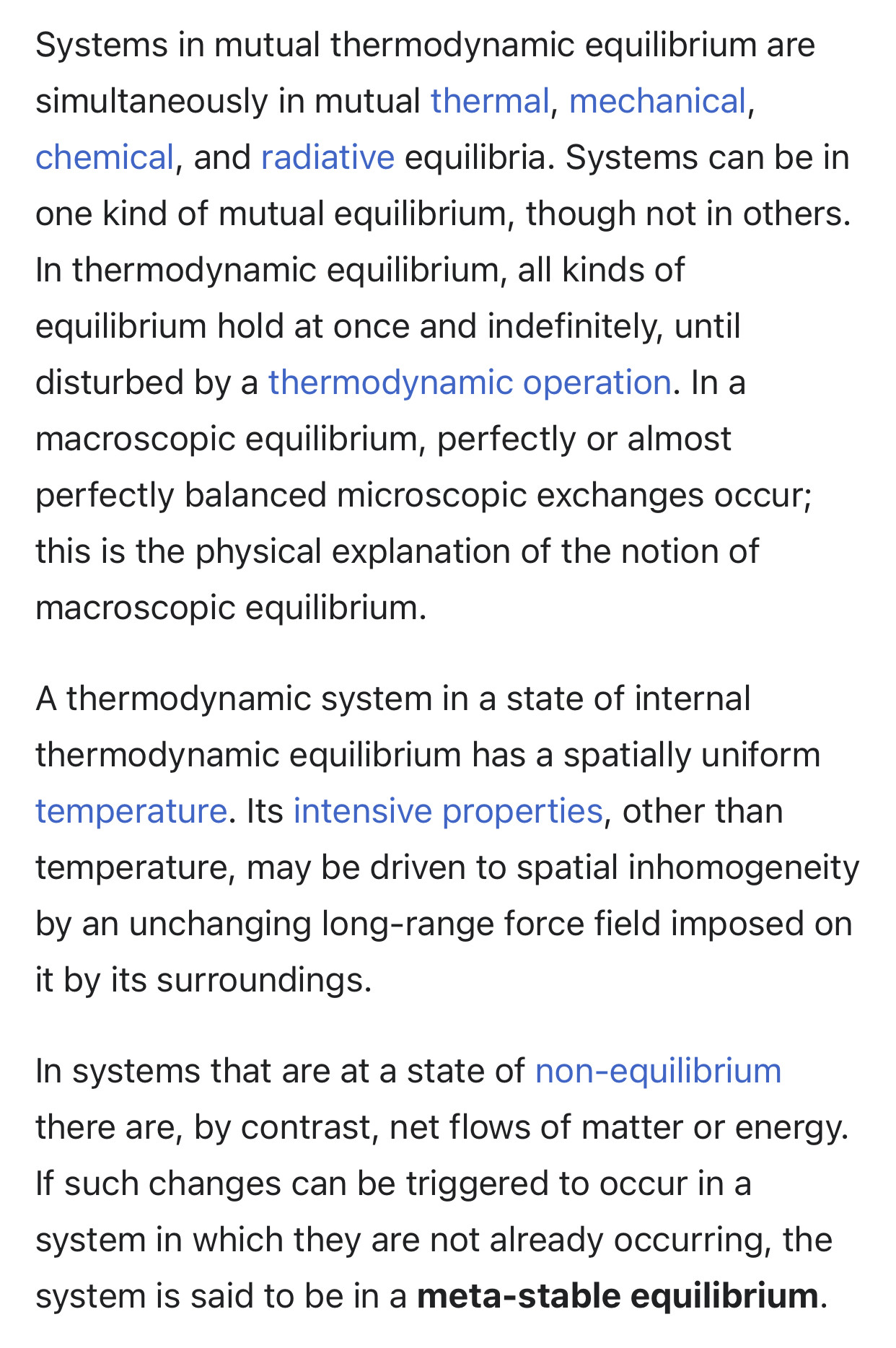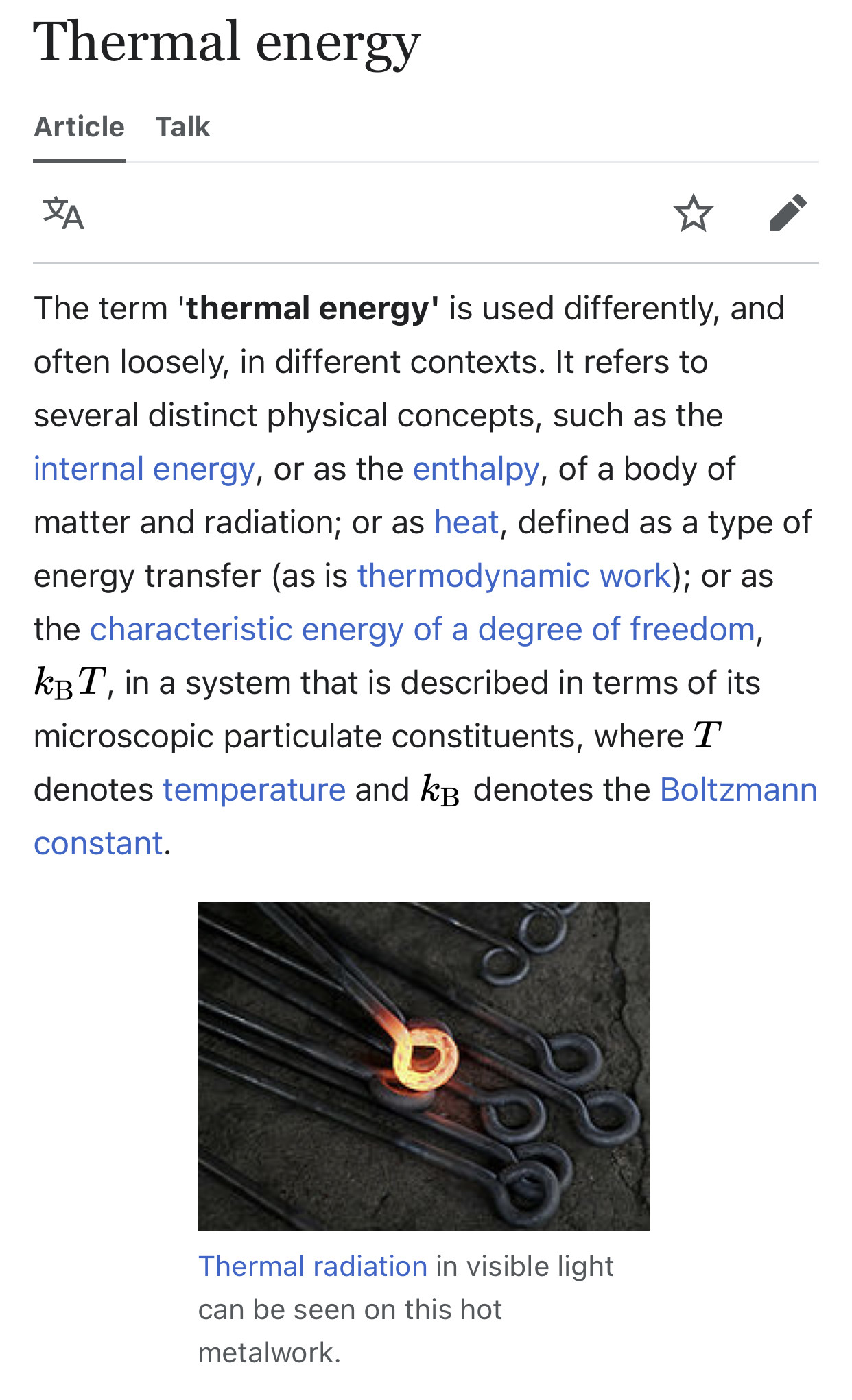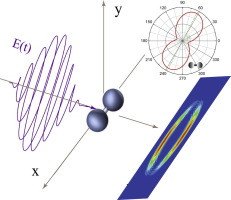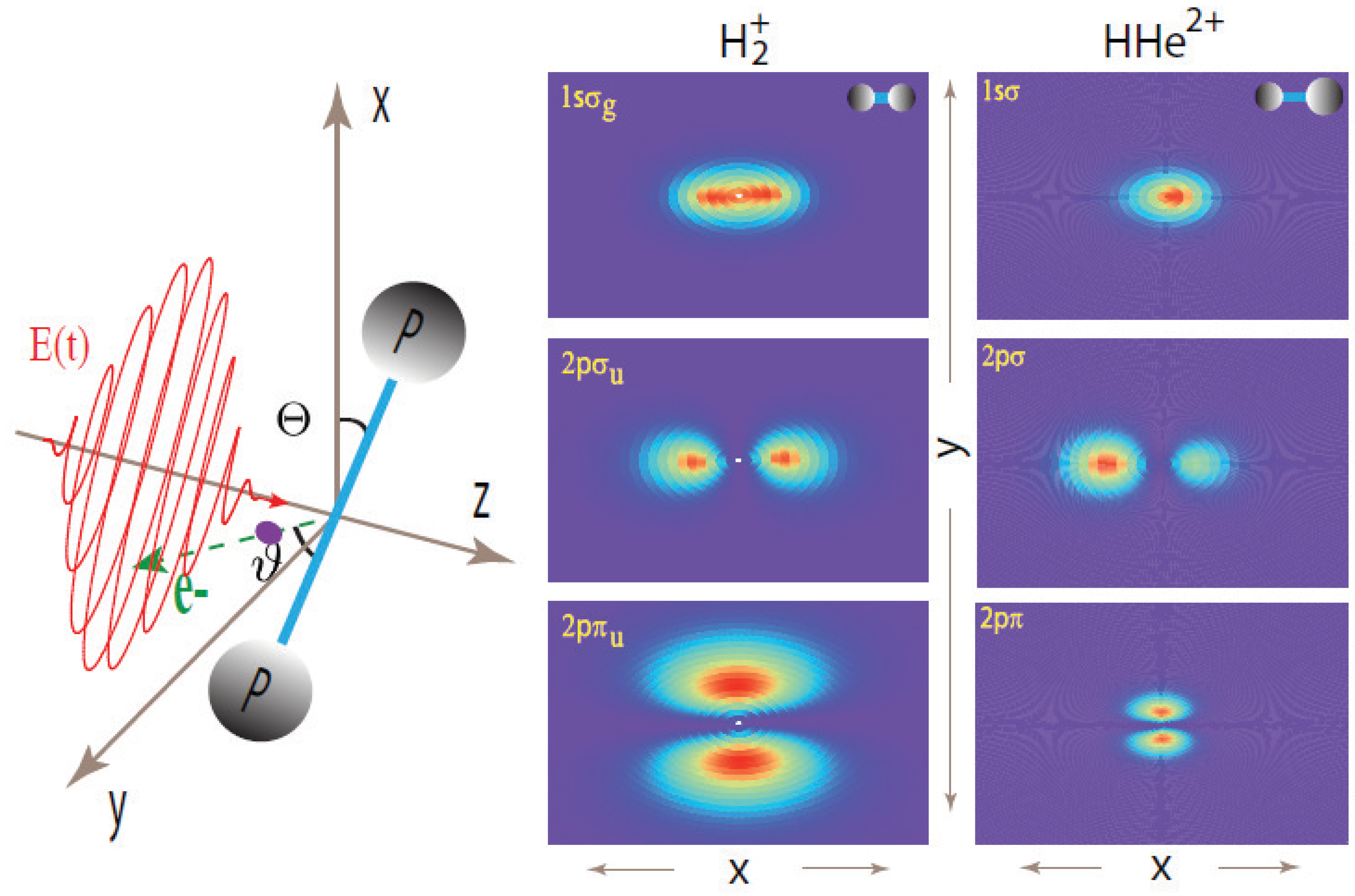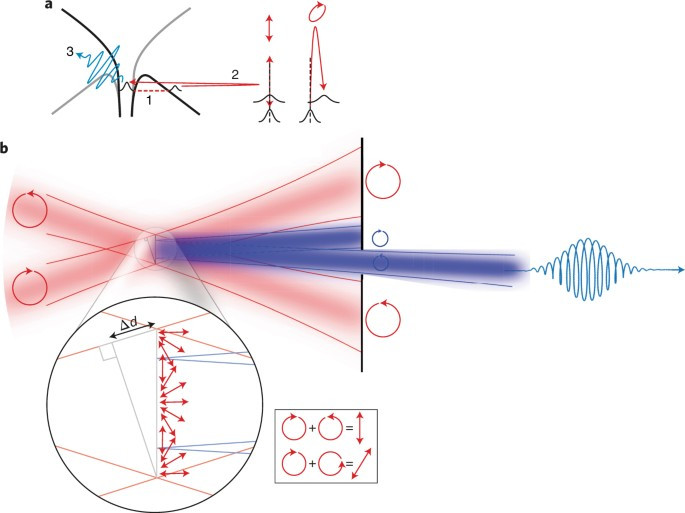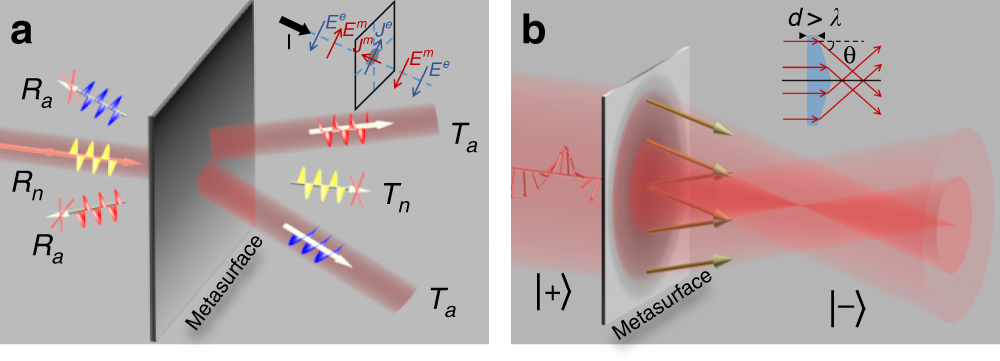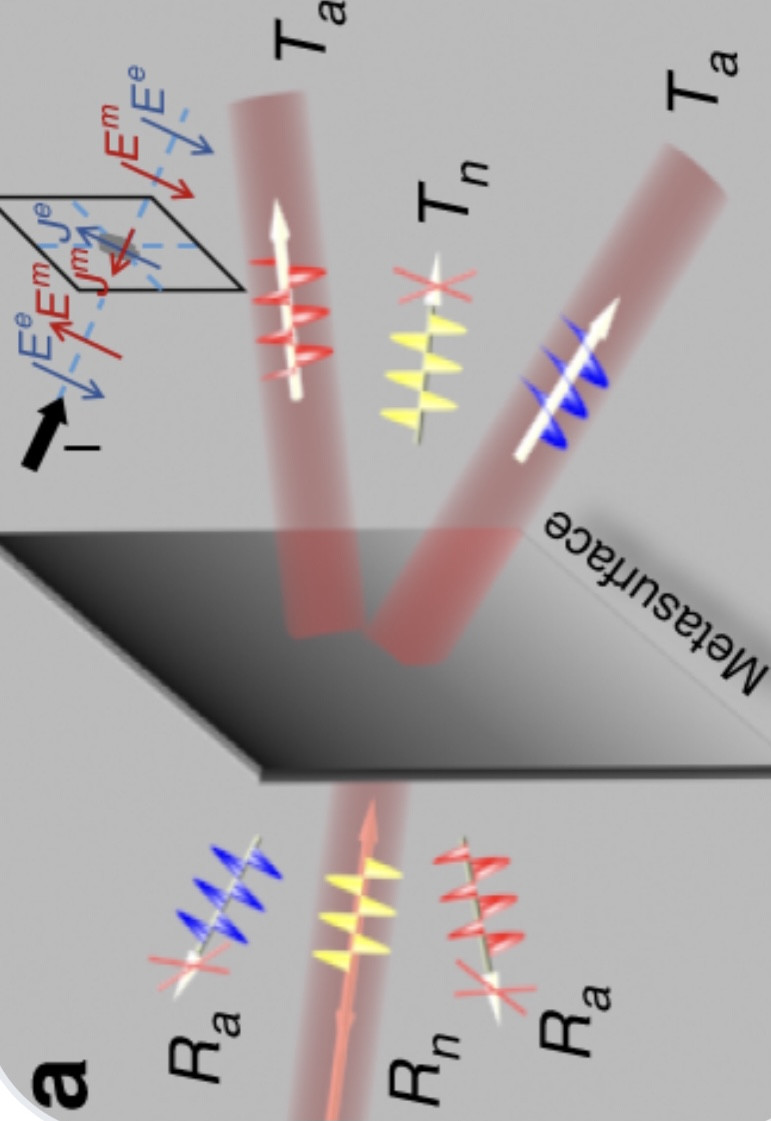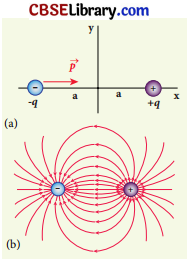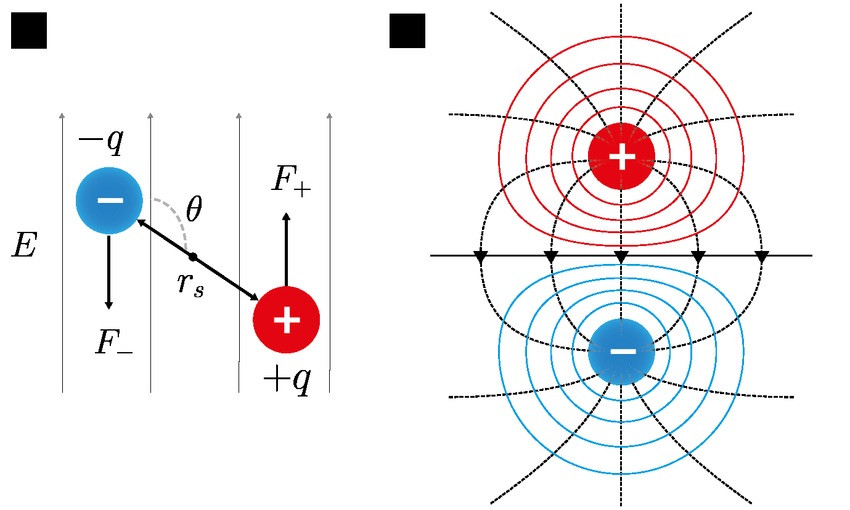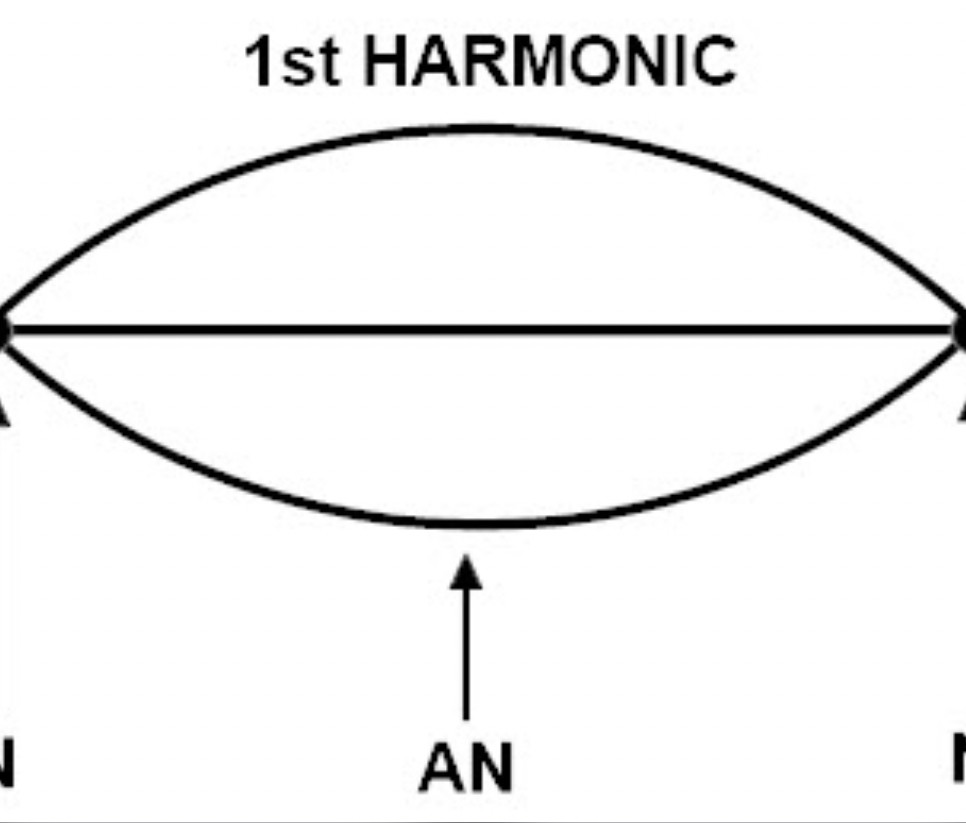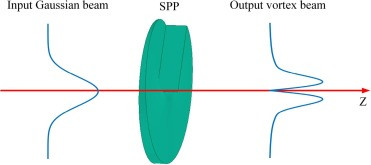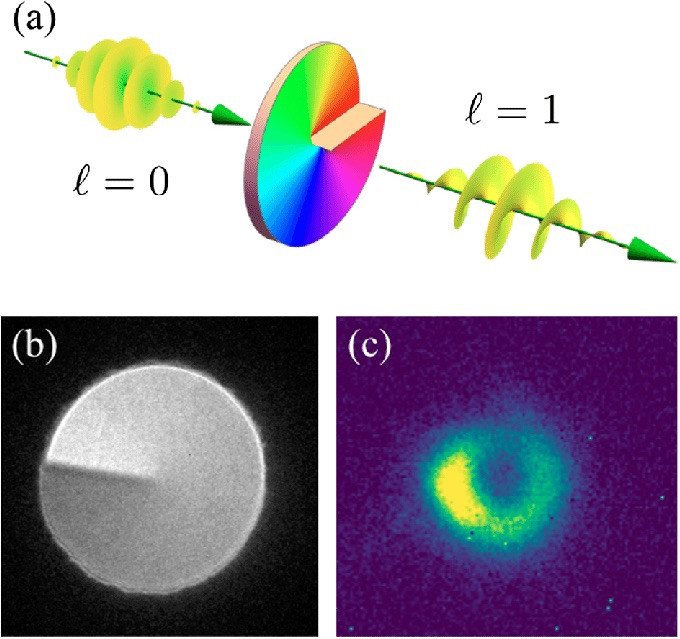Lesson of the day:
denucleate (third-person singular simple present denucleates, present participle denucleating, simple past and past participle denucleated)
To remove the nucleus
defuse (third-person singular simple present defuses, present participle defusing, simple past and past participle defused)
(transitive) To remove the fuse from (a bomb, etc.).
(transitive, figuratively) To make less dangerous, tense, or hostile.
to defuse a hostage situation
(computing, Internet) Any computer attached to a network.
(ecology) A cell or organism which harbors another organism or biological entity, usually a parasite.
Viruses depend on the host that they infect in order to be able to reproduce.
(evolution, genetics) An organism bearing certain genetic material.
The so-called junk DNA is known, so far, to provide no apparent benefit to its host.
(plural mediums, spiritualism) Someone who supposedly conveys information from the spirit world.
From Middle English gost, gast, from Old English gāst (“breath, soul, spirit, ghost, being”), from Proto-West Germanic *gaist, from Proto-Germanic *gaistaz (“ghost, spirit”), from Proto-Indo-European *ǵʰéysd-os, from *ǵʰéysd- (“anger, agitation”). Cognate with Scots ghaist (“ghost”), Saterland Frisian Gäist (“spirit”), West Frisian geast (“spirit”), Dutch geest (“spirit, mind, ghost”), German Geist (“spirit, mind, intellect”), Swedish gast (“ghost”), Sanskrit हेड (héḍa, “anger, hatred”), Persian زشت (zešt, “ugly, hateful, disgusting”).
ghost (countable and uncountable, plural ghosts)
(uncommon or dated) The spirit; the soul of man.
The disembodied soul; the soul or spirit of a deceased person; a spirit appearing after death
Everyone believed that the ghost of an old lady haunted the crypt.
(soul): essence, soul, spirit
(spirit appearing after death): apparition, bogey, haint, phantom, revenant, specter/spectre, spook, wraith.
(faint shadowy semblance): glimmer, glimmering, glimpse, hint, inkling, phantom, spark, suggestion.
(false image in an optical device):
(false image on a television screen): echo
(ghostwriter): ghostwriter
(unresponsive user):
a small flash of light produced by a sudden disruptive electrical discharge through the air.
"there was a spark of light"
spark1
/spɑːk/
verb
gerund or present participle: sparking
1.
emit sparks of fire or electricity.
"the ignition sparks as soon as the gas is turned on"
produce sparks at the point where an electric circuit is interrupted.
2.
ignite.
"the explosion sparked a fire"
provide the stimulus for (an event or process).
"the trial sparked a furious row"
give rise to
cause
lead to
set in motion
occasion
bring about
bring on
begin
start
initiate
precipitate
prompt
trigger (off)
set off
touch off
provoke
incite
stimulate
stir up
From Middle English stiren, sturien, from Old English styrian (“to be in motion, move, agitate, stir, disturb, trouble”), from Proto-Germanic *sturiz (“turmoil, noise, confusion”), related to Proto-West Germanic *staurijan (“to destroy, disturb”). Cognate with Old Norse styrr (“turmoil, noise, confusion”), German stören (“to disturb”), Dutch storen (“to disturb”).
stir (third-person singular simple present stirs, present participle stirring, simple past and past participle stirred)
(transitive) To incite to action
Synonyms: arouse, instigate, prompt, excite; see also Thesaurus:incite
(transitive) To disturb the relative position of the particles of, a liquid of suchlike, by passing something through it
Synonym: agitate
She stirred the pudding with a spoon.
He stirred his coffee so the sugar wouldn't stay at the bottom.
(transitive) To agitate the content of (a container), by passing something through it.
Would you please stir this pot so that the chocolate doesn't burn?
(transitive) To bring into debate; to agitate; to moot.
(transitive, dated) To change the place of in any manner; to move.
(intransitive) To move; to change one’s position.
(intransitive) To be in motion; to be active or bustling; to exert or busy oneself.
(intransitive) To become the object of notice; to be on foot.
(intransitive, poetic) To rise, or be up and about, in the morning.
Synonyms: arise, get up, rouse; see also Thesaurus:wake
stir (countable and uncountable, plural stirs)
The act or result of stirring (moving around the particles of a liquid etc.)
Can you give the soup a little stir?
agitation; tumult; bustle; noise or various movements.
Public disturbance or commotion; tumultuous disorder; seditious uproar.
Agitation of thoughts; conflicting passions.
Sonication is the act of applying sound energy to agitate particles in a sample, for various purposes such as the extraction of multiple compounds from plants, microalgae and seaweeds. Ultrasonic frequencies are usually used, leading to the process also being known as ultrasonication or ultra-sonication.
Project MKUltra was the code name of an illegal human experimentation program designed and undertaken by the U.S. Central Intelligence Agency.
A noninvasive, low-intensity ultrasound method that targets nerve cells, or neurons, can alter brain function to influence decision-making.
New research shows how a brain area called the anterior cingulate cortex controls a type of reasoning known as counterfactual thinking.
brainwave
/ˈbreɪnweɪv/
noun
1.
an electrical impulse in the brain.
"there were systematic changes in brainwaves with sleep"
2.
INFORMAL
a sudden clever idea.
"then he had a brainwave"
move back and forth," Old English wafian "to wave, fluctuate" (related to wæfre "wavering, restless, unstable"), from Proto-Germanic *wab- (source also of Old Norse vafra "to hover about," Middle High German. ... Related: Wobbled; wobbling. The noun is attested from 1690s.
whoa
/wəʊ/
exclamation: whoa; exclamation: woah
1.
used to express surprise, interest, or alarm, or to command attention.
"whoa, that's huge!"
wobbling (plural wobblings)
The motion of something that wobbles.
bles f (plural blessen, diminutive blesje n)
blaze (light-coloured spot on a horse's face)
Noun
bles
(anatomy) belly; abdomen
Verb
bles
past tense of blåse
lase
/leɪz/
Origin
1960s: back-formation from laser, interpreted as an agent noun.
enucleation (n.)
from its cover or capsule," 1640s, noun of action from verb enucleate (1540s), from Latin enucleatus "pure, clean," past participle of enucleare "to lay open, explain in detail," literally "to remove the kernel from" (see ex- + nucleus).
enucleate (third-person singular simple present enucleates, present participle enucleating, simple past and past participle enucleated)
(transitive, biology) To remove the nucleus from (a cell).
(transitive, medicine) To remove without cutting into it; especially, to remove or gouge out (an eyeball or tumor).
(archaic) To explain; to lay bare.
Derived terms
enucleation
lesson
/ˈlɛs(ə)n/
ARCHAIC
gerund or present participle: lessoning
instruct or teach (someone).
lesser
Alternative form of laissier
little
Lit all
The generation lasers are short pulse (from tens of nanoseconds to femtoseconds) and high peak power lasers. Common lasers used for ultrasound generation are solid state Q-Switched Nd:YAG and gas lasers (CO2 or Excimers). The physical principle is of thermal expansion (also called thermoelastic regime) or ablation. In the thermoelastic regime, the ultrasound is generated by the sudden thermal expansion due to the heating of a tiny surface of the material by the laser pulse. If the laser power is sufficient to heat the surface above the material boiling point, some material is evaporated (typically some nanometres) and ultrasound is generated by the recoil effect of the expanding material evaporated. In the ablation regime, a plasma is often formed above the material surface and its expansion can make a substantial contribution to the ultrasonic generation. consequently the emissivity patterns and modal content are different for the two different mechanisms.
The frequency content of the generated ultrasound is partially determined by the frequency content of the laser pulses with shorter pulses giving higher frequencies. For very high frequency generation (up to 100sGHz) femtosecond lasers are used often in a pump-probe configuration with the detection system (see picosecond ultrasonics).
Picosecond ultrasonics is a type of ultrasonics that uses ultra-high frequency ultrasound generated by ultrashort light pulses. It is a non-destructive technique in which picosecond acoustic pulses penetrate into thin films or nanostructures to reveal internal features such as film thickness as well as cracks, delaminations and voids. It can also be used to probe liquids. The technique is also referred to as picosecond laser ultrasonics or laser picosecond acoustics.
pick (one's) moment
To thoughtfully and prudently decide the best moment to act.
The absorption of an incident optical pump pulse sets up a local thermal stress near the surface of the sample. This stress launches an elastic strain pulse that propagates into the sample. The exact depth for the stress generation depends, in particular, on the material involved and the optical pump wavelength. In metals and semiconductors, for example, ultrashort-timescale thermal and carrier diffusion tends to increase the depth that is initially heated within the first ~1 ps.
Acoustic pulses are generated with a temporal duration approximately equal to the acoustic transit time across this initially heated depth, in general greater than the optical absorption depth. For example, the optical absorption depths in Al and GaAs are ~10 nm for blue light, but the electron diffusion depths are ~50 and 100 nm, respectively. The diffusion depth determines the spatial extent of the strain pulse in the through-thickness direction.
The main generation mechanism for metals is thermal expansion, whereas for semiconductors it is often the deformation potential mechanism. In piezoelectric materials the inverse piezoelectric effect, arising from the production of internal electric fields induced by charge separation, may dominate.
Photoinduced charge separation is the process of an electron in an atom or molecule, being excited to a higher energy level by the absorption of a photon and then leaving the atom or molecule to a nearby electron acceptor.
unacceptable
/ʌnəkˈsɛptəb(ə)l/
adjective
not satisfactory or allowable.
"unacceptable behaviour"
intolerable
insufferable
unsatisfactory
impermissible
inadmissible
inappropriate
unsuitable
undesirable
unreasonable
objectionable
insupportable
offensive
obnoxious
disagreeable
disgraceful
deplorable
terrible
distasteful
displeasing
improper
unseemly
beyond the pale
bad
poor
not on
a bit much
out of order
out
not quite the done thing
too much
a bit thick
a bit off
off
not cricket
over the fence
exceptionable
condemnable
condemnation
/ˌkɒndəmˈneɪʃn/
noun
1.
the expression of very strong disapproval; censure.
"there was strong international condemnation of the attack"
censure
criticism
castigation
stricture
denunciation
damnation
vilification
opprobrium
reproof
disapproval
disapprobation
flak
a bad press
reprobation
arraignment
excoriation
objurgation
the action of condemning someone to a punishment; sentencing.
TO SENTENCING
sensible
/ˈsɛnsɪb(ə)l/
adjective
1.
done or chosen in accordance with wisdom or prudence; likely to be of benefit.
practical
realistic
responsible
full of common sense
reasonable
rational
logical
sound
circumspect
balanced
sober
no-nonsense
pragmatic
level-headed
serious-minded
thoughtful
commonsensical
down-to-earth
wise
prudent
mature
judicious
sagacious
sharp
shrewd
far-sighted
intelligent
clever
late Middle English (also in the sense ‘perceptible by the senses’): from Old French, or from Latin sensibilis, from sensus (see sense).
God bless.
It is also possible to generate strain pulses whose shape does not vary on propagation. These so-called acoustic solitons have been demonstrated at low temperatures over propagation distances of a few millimeters. They result from a delicate balance between acoustic dispersion and nonlinear effects.
Love can build a bridge. Looking for individuals to help with construction. Contact your local We are ready centers to join.
Would this be because heat causes expansion and therefore more friction? More friction less movement? No expansion=freedom?
Thermal expansion is the tendency of matter to change its shape, area, volume, and density in response to a change in temperature, usually not including phase transitions.
Temperature is a monotonic function of the average molecular kinetic energy of a substance. When a substance is heated, molecules begin to vibrate and move more, usually creating more distance between themselves. Substances which contract with increasing temperature are unusual, and only occur within limited temperature ranges (see examples below). The relative expansion (also called strain) divided by the change in temperature is called the material's coefficient of linear thermal expansion and generally varies with temperature. As energy in particles increases, they start moving faster and faster weakening the intermolecular forces between them, therefore expanding the substance.
Local hyperthermia heats a very small area and is typically used for cancers near or on the skin or near natural openings in the body (e.g., the mouth). In some instances, the goal is to kill the tumor by heating it, without damaging anything else. The heat may be created with microwave, radiofrequency, ultrasound energy or using magnetic hyperthermia (also known as magnetic fluid hyperthermia)
It should not be confused with ablation of small tumors, where higher temperatures (>55°C) are applied with an aim to kill the tumor cells
Many scientists argue that even though viruses can use other cells to reproduce itself, viruses are still not considered alive under this category.
So were they ever alive? Most biologists say no. Viruses are not made out of cells, they can't keep themselves in a stable state, they don't grow, and they can't make their own energy. Even though they definitely replicate and adapt to their environment, viruses are more like androids than real living organisms.
Examples of liquid crystals can be found both in the natural world and in technological applications. Widespread liquid-crystal displays use liquid crystals. Lyotropic liquid-crystalline phases are abundant in living systems but can also be found in the mineral world. For example, many proteins and cell membranes are liquid crystals. Other well-known examples of liquid crystals are solutions of soap and various related detergents, as well as the tobacco mosaic virus, and some clays.
The chemical composition of magnetite is Fe2+(Fe3+)2(O2-)4. This indicates that magnetite contains both ferrous (divalent) and ferric (trivalent) iron, suggesting crystallization in an environment containing intermediate levels of oxygen. The main details of its structure were established in 1915. It was one of the first crystal structures to be obtained using X-ray diffraction. The structure is inverse spinel, with O2− ions forming a face-centered cubic lattice and iron cations occupying interstitial sites. Half of the Fe3+ cations occupy tetrahedral sites while the other half, along with Fe2+ cations, occupy octahedral sites. The unit cell consists of 32 O2− ions and unit cell length is a = 0.839 nm.[
Iron exists in two oxidation states: the ferrous cation (Fe2+) and ferric cation (Fe3+). Non-haem iron in food is mainly in the ferric state, which is the insoluble form of iron, and must be reduced to the ferrous cation for absorption
When oxygen levels reached significant levels, iron reacted with oxygen, forming ferric oxide.
Formula and structure: The iron (II) sulfate chemical formula is FeSO4. The molar mass is 151.91 g/mol. ... The molecule dehydrate es formed by one cation ferrous Fe2+ and one sulfate anion SO42-. Its chemical structure can be written as below, in the common representations used for organic molecules.
Magnetic hyperthermia (MHT) utilizing heat generated by magnetic nanoparticles under alternating magnetic field (AMF) is an effective local tumor ablation method but can hardly treat metastatic tumors.
We propose a mechanism for tumor growth emphasizing the role of homeostatic regulation and tissue stability.
We show that competition between surface and bulk effects leads to the existence of a critical size that must be overcome by metastases to reach macroscopic sizes. This property can qualitatively explain the observed size distributions of metastases, while size-independent growth rates cannot account for clinical and experimental data. In addition, it potentially explains the observed preferential growth of metastases on tissue surfaces and membranes such as the pleural and peritoneal layers, suggests a mechanism underlying the seed and soil hypothesis introduced by Stephen Paget in 1889, and yields realistic values for metastatic inefficiency. We propose a number of key experiments to test these concepts. The homeostatic pressure as introduced in this work could constitute a quantitative, experimentally accessible measure for the metastatic potential of early malignant growths.
Self-assembly is the spontaneous organization of smaller subunits to form larger, well-organized patterns. For nanoparticles, this spontaneous assembly is a consequence of interactions between the particles aimed at achieving a thermodynamic equilibrium and reducing the system's free energy.
Thermodynamic equilibrium is an axiomatic concept of thermodynamics. It is an internal state of a single thermodynamic system, or a relation between several thermodynamic systems connected by more or less permeable or impermeable walls. In thermodynamic equilibrium there are no net macroscopic flows of matter or of energy, either within a system or between systems.
Though not a widely named "law," it is an axiom of thermodynamics that there exist states of thermodynamic equilibrium. The second law of thermodynamics states that when a body of material starts from an equilibrium state, in which, portions of it are held at different states by more or less permeable or impermeable partitions, and a thermodynamic operation removes or makes the partitions more permeable and it is isolated, then it spontaneously reaches its own, new state of internal thermodynamic equilibrium, and this is accompanied by an increase in the sum of the entropies of the portions.
Both sensible and latent heats are observed in many processes of transfer of energy in nature. Latent heat is associated with the change of phase of atmospheric or ocean water, vaporization, condensation, freezing or melting, whereas sensible heat is energy transferred that is evident in change of the temperature of the atmosphere or ocean, or ice, without those phase changes, though it is associated with changes of pressure and volume.
The original usage of the term, as introduced by Black, was applied to systems that were intentionally held at constant temperature. Such usage referred to latent heat of expansion and several other related latent heats. These latent heats are defined independently of the conceptual framework of thermodynamics.[3]
When a body is heated at constant temperature by thermal radiation in a microwave field for example, it may expand by an amount described by its latent heat with respect to volume or latent heat of expansion, or increase its pressure by an amount described by its latent heat with respect to pressure.[4]Latent heat is energy released or absorbed, by a body or a thermodynamic system, during a constant-temperature process. Two common forms of latent heat are latent heat of fusion (melting) and latent heat of vaporization (boiling). These names describe the direction of energy flow when changing from one phase to the next: from solid to liquid, and liquid to gas.
"heated at constant temperature by thermal radiation in a microwave field for example"
Microwaves use electricity for it energy source and transmits micrometer electromagnetic waves into the device. These waves then cause the water molecules in the food to move rapidly, producing heat.
Electricity is related to charges, and both electrons and protons carry a charge. The amount of the charge is the same for each particle, but opposite in sign. Electrons carry a negative charge while protons carry positive charge. ... As a result, it is moving electrons that are primarily responsible for electricity.
Piezoelectricity is the electric charge that accumulates in certain solid materials—such as crystals, certain ceramics, and biological matter such as bone, DNA, and various proteins—in response to applied mechanical stress. The word piezoelectricity means electricity resulting from pressure and latent heat.
Latent heat is the energy absorbed by or released from a substance during a phase change from a gas to a liquid or a solid or vice versa. ... When these gas molecules condense into liquid drops, latent heat is released into the atmosphere which warms the air surrounding the molecule.
A piezoelectric crystal is placed between two metal plates. ... At this point the material is in perfect balance and does not conduct an electric current. Mechanical pressure is then applied to the material by the metal plates, which forces the electric charges within the crystal out of balance.
Acoustic attenuation is a measure of the energy loss of sound propagation in media. Most media have viscosity, and are therefore not ideal media. When sound propagates in such media, there is always thermal consumption of energy caused by viscosity.
An attenuated vaccine (or a live attenuated vaccine, LAV) is a vaccine created by reducing the virulence of a pathogen, but still keeping it viable (or "live"). Attenuation takes an infectious agent and alters it so that it becomes harmless or less virulent. These vaccines contrast to those produced by "killing" the virus (inactivated vaccine).
Silica particles as a nanoparticulate carrier material for contrast agents have received considerable attention the past few years, since the material holds great promise for biomedical applications. A key feature for successful application of this material in vivo is biocompatibility, which may be significantly improved by appropriate surface modification. In this study, we report a novel strategy to coat silica particles with a dense monolayer of paramagnetic and PEGylated lipids. The silica nanoparticles carry a quantum dot in their center and are made target-specific by the conjugation of multiple alphavbeta3-integrin-specific RGD-peptides. We demonstrate their specific uptake by endothelial cells in vitro using fluorescence microscopy, quantitative fluorescence imaging, and magnetic resonance imaging. The lipid-coated silica particles introduced here represent a new platform for nanoparticulate multimodality contrast agents.
Malignant hyperthermia has been an iatrogenic syndrome which was usually fatal. The syndrome occurs when certain physiologically active compounds act on defective skeletal and cardiac muscle cells. The syndrome consists of a soaring fever, severe acidosis, tachycardia, tachypnea, and usually myoclonic spasms. Cardiac arrhythmias, shock, bleeding disorders, and death soon follow. Malignant hyperthermia has characteristically complicated the administrations of anesthesiologists, but is being triggered by drugs used in other diagnostic and therapeutic activities. This paper reports a fatal case which followed the infusion of iodinated contrast media.
The increased release of epinephrine and the production of fibrin split products seen in an iodinated contrast media reaction suggest certain commonalities between it and a malignant hyperthermia reaction which may be triggered be epinephrine and is complicated by disseminated vascular clotting and bleeding disorders. The potential for successful treatment has greatly improved with the availability of dantrolene. Increased awareness of the syndrome, temperature monitoring, early diagnosis, and rapid treatment should make this malignant disorder less threatening.
Iron oxide nanoparticles, with their superparamagnetic properties, are used in a rapidly expanding number of applications, such as for cell labeling, separation, and tracking; for therapeutic agents in cancer therapy; and for diagnostic agents
Superparamagnetic iron oxide MR imaging contrast agents have been the subjects of extensive research over the past decade. The iron oxide particle size of these contrast agents varies widely, and influences their physicochemical and pharmacokinetic properties, and thus clinical application. Superparamagnetic agents enhance both T1 and T2/T2* relaxation.
T1 (longitudinal relaxation time) is the time constant which determines the rate at which excited protons return to equilibrium. It is a measure of the time taken for spinning protons to realign with the external magnetic field.
This paper describes reversible “on–off” switching of the photoluminescence (PL) intensity of CdSe quantum dots (QDs), mediated by photochromic furylfulgide carboxylate (FFC) molecules chemisorbed to the surfaces of the QDs. Repeated cycles of UV and visible illumination switch the FFC between “closed” and “open” isomers. Reversible switching of the QDs’ PL intensity by >80% is enabled by different rates and yields of PL-quenching photoinduced electron transfer (PET) from the QDs to the respective isomers. This difference is consistent with cyclic voltammetry measurements and density functional calculations of the isomers’ frontier orbital energies. This work demonstrates fatigue-resistant modulation of the PL of a QD-molecule complex through remote control of PET. Such control potentially enables applications, such as all-optical memory, sensing, and imaging, that benefit from a fast, tunable, and reversible response to light stimuli.
Quantum dots (QDs) are a subset of nanoparticles and given their properties, can be used as fluorescent NIR probes, as an alternative to organic dyes.
QDs are typically inorganic semiconductor nanoparticles, with the exception of carbon QDs, with sizes usually below 50 nm. The distinct optical properties observed in these compounds, when compared with their bulk counterparts, are due to the existence of quantum confinement effects. The quantum confinement effects that are observed are directly influenced by the material's composition and physical dimensions.
In bulk semiconductor materials there is a band-gap energy (Eg) that represents the difference between the highest occupied energy state of the valence band and the lowest unoccupied state of the conduction band. When an electron in the valence band absorbs a photon with energy equal to, or higher than Eg, it becomes excited and transitions to the conduction band. This leaves behind an “electron hole.” The negatively charged electron and the positively charged hole form a quasi-particle called an exciton. When the electron relaxes back to the valence band, it annihilates the exciton and may release energy in the form of a photon, with energy lower than Eg (due to energy lost in the transition), in a process called radiative recombination.
In the solid-state physics of semiconductors, carrier generation and carrier recombination are processes by which mobile charge carriers (electrons and electron holes) are created and eliminated. Carrier generation and recombination processes are fundamental to the operation of many optoelectronic semiconductor devices, such as photodiodes, light-emitting diodes and laser diodes. They are also critical to a full analysis of p-n junction devices such as bipolar junction transistors and p-n junction diodes.
The electron–hole pair is the fundamental unit of generation and recombination in inorganic semiconductors, corresponding to an electron transitioning between the valence band and the conduction band where generation of electron is a transition from the valence band to the conduction band and recombination leads to a reverse transition.
photodiode
/ˌfəʊtəʊˈdʌɪəʊd/
noun
a semiconductor diode which, when exposed to light, generates a potential difference or changes its electrical resistance.
There has been much work towards improving infrared photodetectors for telecommunication and spectroscopy, such as indium gallium arsenide (InGaAs) detectors, mercury cadmium telluride detectors, quantum-confined material detectors, etc. However, the performance of these detectors is degraded by factors including difficulty of material growth, requirement of cooling, low quantum efficiencies, or large dark current [1]. On the other hand, silicon (Si) photodetectors can have high detection efficiency, low dark currents, and excellent timing resolution, even at room temperature [2].
To use Si detectors beyond ∼ 1.1 μm, much recent work has focused on parametric frequency processes to upconvert infrared signal above the Si bandgap, which has allowed efficient single-photon-level near-infrared (NIR)-photodetections in Si avalanche photodiodes [3, 4, 5, 6]. It was shown that periodically poled lithium niobate (PPLN) waveguide-based upconversion detectors can achieve a detection efficiency higher than 35% with excess noise as low as 103 counts s−1 [6], outperforming InGaAs detectors, though at the loss of spectral bandwidth. Furthermore, by tuning the pump wavelength and using the phase-matching acceptance bandwidth acting as the frequency selective element, upconversion spectrometers were demonstrated [7, 8, 9, 10].
Demonstrate comes from the Latin word demonstrare, meaning “to point out by argument or deduction.”
To demonstrate a point you must make a valid argument and give examples of why you think it's true.
From Middle English demonstracioun, from Old French demonstration, from Latin demonstrationem, from demonstrare (“show or explain”), from de- (“of or concerning”) + monstrare (“show”). Morphologically demonstrate + -ion
Pronunciation
IPA(key): /dɛmənˈstɹeɪʃən/
Audio (US)
(file)
Rhymes: -eɪʃən
Noun
demonstration (countable and uncountable, plural demonstrations)
The act of demonstrating; showing or explaining something.
dissolve; 3rd person present: dissolves; past tense: dissolved; past participle: dissolved; gerund or present participle: dissolving
1.
(with reference to a solid) become or cause to become incorporated into a liquid so as to form a solution.
go into solution
become a solution
break down
liquefy
melt
deliquesce
disintegrate
diffuse
solvate
disappear.
vanish
melt away
evaporate
disperse
dissipate
disintegrate
dwindle
fade (away)
fall away
subside
ebb
wane
peter out
fizzle out
crumble
decompose
wilt
wither
perish
die
be destroyed
cease to exist
come to an end
pass away
evanesce
subside uncontrollably into (an expression of strong feelings).
"she suddenly dissolved into floods of tears"
late Middle English (also in the sense ‘break down into component parts’): from Latin dissolvere, from dis- ‘apart’ + solvere ‘loosen or solve’.
solve
/sɒlv/
verb: solve; 3rd person present: solves; past tense: solved; past participle: solved; gerund or present participle: solving
find an answer to, explanation for, or means of effectively dealing with (a problem or mystery).
find an/the answer to
find a/the solution to
answer
resolve
work out
puzzle out
fathom
find the key to
decipher
decode
break
clear up
interpret
translate
straighten out
get to the bottom of
make head or tail of
unravel
disentangle
untangle
unfold
piece together
explain
expound
elucidate
figure out
suss out
crack
solvable
Capable of being solved.
Synonym: soluble
Antonyms: unsolvable, insolvable, insoluble
a solvable problem
(obsolete) Capable of being dissolved or liquefied.
Liquid crystals (LCs) are a state of matter which has properties between those of conventional liquids and those of solid crystals.
First of all, you should know the chemical structure of the liquid crystal you have, so that you can chose the proper solvent.
In electronics, desoldering is the removal of solder and components from a circuit board for troubleshooting, repair, replacement, and salvage.
solder
/ˈsəʊldə,ˈsɒldə/
verb
gerund or present participle: soldering
join with solder.
Middle English: from Old French soudure, from the verb souder, from Latin solidare ‘fasten together’, from solidus ‘solid’.
weld
/wɛld/
verb
gerund or present participle:
welding
Ultrasonic welding, for thermoplastic injection moulded components, is a process that uses mechanical vibrations above the audible range. The vibrations, produced by a welding sonotrode or horn, as it is generally known, are used to soften or melt the thermoplastic material at the joint line.
Vibration is a mechanical phenomenon whereby oscillations occur about an equilibrium point. The word comes from Latin vibrationem ("shaking, brandishing"). The oscillations may be periodic, such as the motion of a pendulum—or random, such as the movement of a tire on a gravel road.
Nucleate boiling is a type of boiling that takes place when the surface temperature is hotter than the saturated fluid temperature by a certain amount but where the heat flux is below the critical heat flux. For water, as shown in the graph below, nucleate boiling occurs when the surface temperature is higher than the saturation temperature (TS) by between 10 and 30 °C (18 and 54 °F). The critical heat flux is the peak on the curve between nucleate boiling and transition boiling. The heat transfer from surface to liquid is greater than that in film boiling.
Nucleate boiling is common in electric kettles and is responsible for the noise that occurs before boiling occurs. It also occurs in water boilers where water is rapidly heated.
Heat transfer is a discipline of thermal engineering that concerns the generation, use, conversion, and exchange of thermal energy (heat) between physical systems. Heat transfer is classified into various mechanisms, such as thermal conduction, thermal convection, thermal radiation, and transfer of energy by phase changes. Engineers also consider the transfer of mass of differing chemical species (mass transfer in the form of advection), either cold or hot, to achieve heat transfer. While these mechanisms have distinct characteristics, they often occur simultaneously in the same system.
Heat conduction, also called diffusion, is the direct microscopic exchange of kinetic energy of particles (such as molecules) or quasiparticles (such as lattice waves) through the boundary between two systems. When an object is at a different temperature from another body or its surroundings, heat flows so that the body and the surroundings reach the same temperature, at which point they are in thermal equilibrium. Such spontaneous heat transfer always occurs from a region of high temperature to another region of lower temperature, as described in the second law of thermodynamics.
Stop.
I am guessing the answer is in the question.
Here we report a numerical s tudy on ion accelerationwith circularly polarized pulses (CP) with the aim toshow the peculiar features of the ion s ource (high effi-ciency, large ion density, short duration, good collima-tion) which may be advantageous for spe cific a pplica-tions. A comparison with the case of linearly polar-ized pulses (LP) is made to evidentiate the differenceswith CP and to provide a deeper understanding of “pon-deromotive” (i.e. radiation pressure–dominated) mecha-nisms. This is possible because using CP at normal in-cidence fast electron generation is almost suppressed,18thus related effects (such as TNSA) can be separated bypurely ponderomotive ones.
A loudness (countable and uncountable, plural loudnesses)
the perceptual strength or amplitude of sound pressure, measured in sones or phons
the physical strength of the sound pressure level, measured in decibels
"The word literal comes from the Latin word littera, which means letter, so when you literally go back to the origin of the word it means letter by letter, in its exact accurate sense, and literally means according to the letter of the language
A N - L E T T E R I N G
late 16th century (in the sense ‘relating to music, musical’): via Latin from Greek harmonikos, from harmonia (see harmony).
harmonious
/hɑːˈməʊnɪəs/
adjective
tuneful; not discordant.
tuneful
melodious
melodic
sweet-sounding
pleasant-sounding
sweet-toned
mellifluous
dulcet
lyrical
euphonious
euphonic
harmonic
harmonizing
polyphonic
consonant
easy on the ear
symphonious
canorous
mellifluent
"harmonious music"
forming a pleasing or consistent whole.
"the decor is a harmonious blend of traditional and modern"
congruous
coordinated
matching
balanced
proportional
in proportion
compatible
well matched
well proportioned
well balanced
free from disagreement or dissent.
"harmonious relationships"
friendly
amicable
cordial
amiable
agreeable
congenial
easy
peaceful
peaceable
conflict-free
cooperative
good-natured
fraternal
compatible
sympathetic
united
attuned
in harmony
in rapport
in tune
in accord
of one mind
seeing eye to eye
the state of being in agreement or concord.
"man and machine in perfect harmony"
Etymology and definitions. The term harmony derives from the Greek ἁρμονία harmonia, meaning "joint, agreement, concord", from the verb ἁρμόζω harmozō, "(Ι) fit together, join".
harmonia f
harmony
consonance
concertina
accordion
Synonym: akordeon
From Old French, from Latin consonantia
Noun
consonance (countable and uncountable, plural consonances)
Examples (prosody)
lady lounges lazily, dark deep dread crept in
(prosody) The repetition of consonant sounds, but not vowels as in assonance.
(chiefly music) Harmony; agreement; lack of discordance.
Antonyms
dissonance
discordance
From French assonance, from Latin assonāre.
AN ASSONARE
verb: honour; 3rd person present: honours; past tense: honoured; past participle: honoured; gerund or present participle: honouring; verb: honor; 3rd person present: honors; past tense: honored; past participle: honored; gerund or present participle: honoring
1.
regard with great respect.
alliterational (comparative more alliterational, superlative most alliterational)
Involving alliteration; alliterative.
lite (plural lites)
Archaic form of light.
rational
1.
based on or in accordance with reason or logic.
"I'm sure there's a perfectly rational explanation"
"explanatory notes"
planetary
/ˈplanɪt(ə)ri/
adjective: planetary
relating or belonging to a planet or planets.
"a planetary system"
late 16th century: from late Latin planetarius ‘relating to the planets’ (recorded only as a noun meaning ‘astrologer’), from planeta ‘planet’.
late Middle English: from Old French astrologie, from Latin astrologia, from Greek, from astron ‘star’.
(God bless you all). 🙏🏻❤️🕯🕊
dismantled
simple past tense and past participle of dismantle
DISMANTLING THE TRUTH
tell
/tɛl/
verb
gerund or present participle: telling
1.
communicate information to someone in spoken or written words.
"I told her you were coming"
inform
let know
notify
apprise
make aware
mention something to
acquaint with
advise
put in the picture
brief
fill in
break the news to
alert
warn
forewarn
clue in
speak
utter
say
voice
state
declare
communicate
make known
impart
divulge
announce
proclaim
broadcast
relate
recount
narrate
give an account of
set forth
unfold
retail
report
chronicle
recite
rehearse
describe
portray
sketch
delineate
depict
paint
weave
spin
reveal (information) to someone in a non-verbal way.
"the figures tell a different story"
reveal
show
be/give evidence of
disclose
indicate
convey
signify
display
exhibit
divulge confidential or private information.
"promise you won't tell"
give the game away
talk
tell tales
open one's mouth
tattle
spill the beans
let the cat out of the bag
blab
blow the gaff
decide or determine correctly or with certainty.
"you can tell they're in love"
ascertain
decide
determine
work out
make out
deduce
discern
perceive
see
identify
recognize
understand
comprehend
be sure
be certain
figure out
get a fix on
suss out
perceive (the difference between one person or thing and another).
"I can't tell the difference between margarine and butter"
distinguish
differentiate
tell apart
discriminate
Old English tellan ‘relate, count, estimate’, of Germanic origin; related to German zählen ‘reckon, count’, erzählen ‘recount, relate’, also to tale.
reckon
/ˈrɛk(ə)n/
verb: reckon; 3rd person present: reckons; past tense: reckoned; past participle: reckoned; gerund or present participle: reckoning
1.
establish by calculation.
late Middle English: from late Latin calculat- ‘counted’, from the verb calculare, from calculus ‘a small pebble (as used on an abacus)’.
suppose or believe.
"I calculate it's pretty difficult to git edication down there"
intend (an action) to have a particular effect.
"his last words were calculated to wound her"
"Mac was taking a calculated risk"
"risky”
From Proto-Germanic *risą, a zero-grade formation from *rīsaną (“to rise”).
Noun
ris n (genitive singular riss, nominative plural ris)
rising (the process of something rising)
attic, part of a house directly under the (slanting) roof
Synonyms: háaloft, loft, þakhæð, rishæð, hanabjálki
climax (of a story)
climax; plural noun: climaxes
the most intense, exciting, or important point of something; the culmination.
"she was nearing the climax of her speech"
peak
pinnacle
height
high point
highest point
summit
top
acme
zenith
apex
apogee
apotheosis
culmination
crowning point
crown
crest
crescendo
finale
denouement
highlight
high spot
best part
an orgasm.
G-spot

